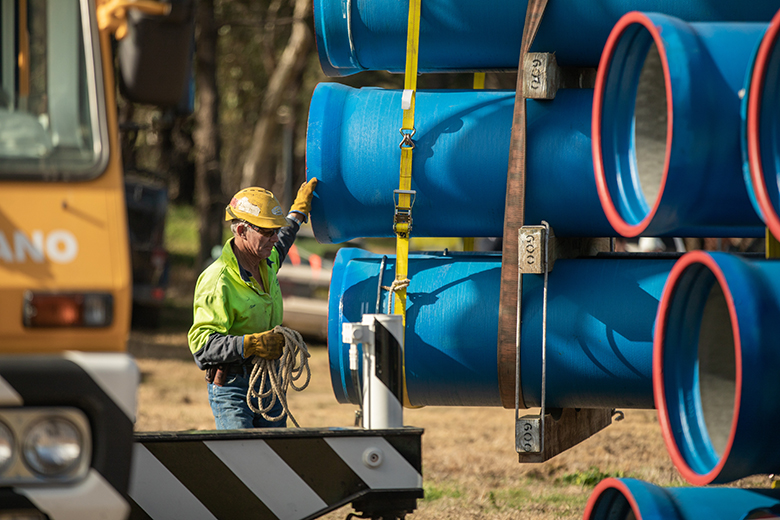New Dungowan pipeline - Stage 1 helping to save an Olympic amount of water every day
Stage 1 of the new Dungowan pipeline has been finished. Helping to save 2.2 megalitres (ML) in water losses every day, almost the same amount of water as an Olympic swimming pool.
The new 21 km pipeline connects the Calala Water Treatment Plant in Tamworth to the nearby town of Dungowan. This will see 22 ML of water flowing through the pipe each day to the residents and businesses of the region.
The pipeline has also been connected to Chaffey Dam, which has been a vital water source for residents in previous dry times, including peak drought conditions in 2020.
With drier times forecast for the future, this work is being delivered in time to help drought proof the regions water supplies. Making it more reliable, sustainable and efficient.
A huge boost in over $6 million has also been injected into the local economy. Which is often an unseen benefit of water infrastructure projects, with even small steps like a tradesperson buying lunch at a local café helping to make a difference.
Testing is currently being undertaken and is expected to be complete in September. From there, the project will be handed over to the local council to own and run.
Results from the recent detailed business case identified the need for the existing 70-year-old water infrastructure to be replaced with the new and improved pipeline. This is a great example of how an issue was identified, solutions brought forward, and then action taken.
The $55 million pipeline was jointly funded by the Australian Government through the National Water Grid Fund and the NSW Government.
The Australian and NSW governments are continuing to work together to further shore up water security in the Tamworth region.
Learn more
For further information, visit the Dungowan Pipeline project page.

